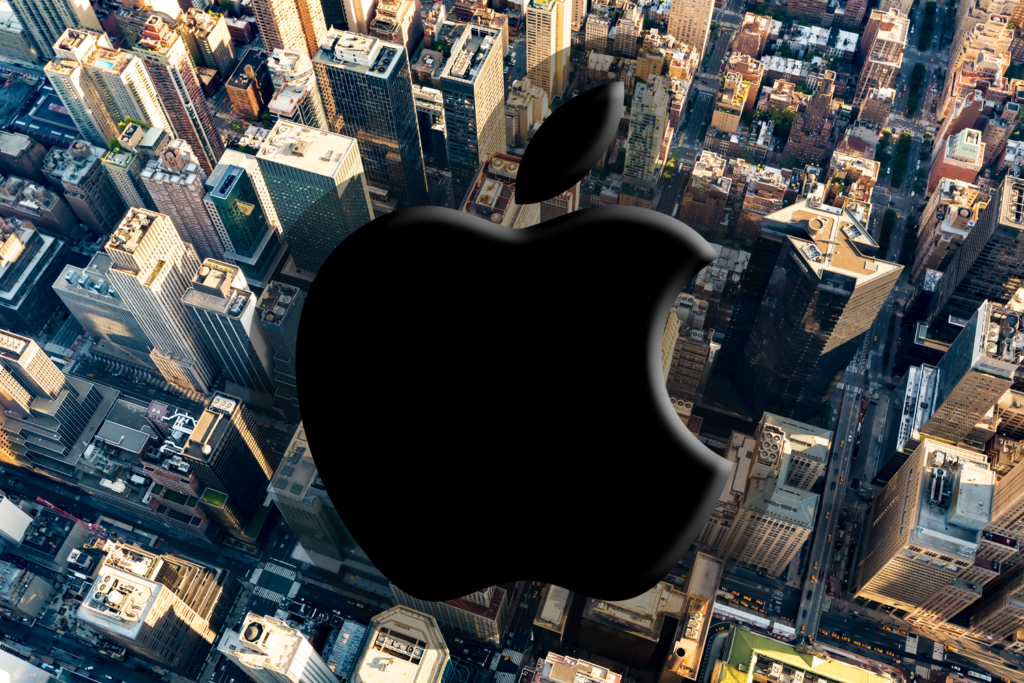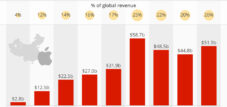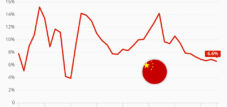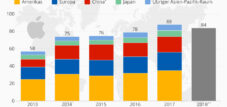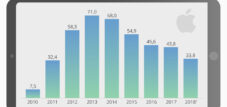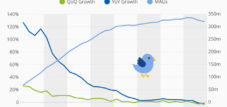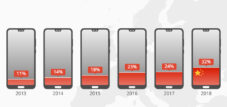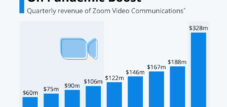Apples Schwäche – Apple’s weakness
Sprachauswahl 📢
Veröffentlicht am: 31. Januar 2019 / Update vom: 31. Januar 2019 – Verfasser: Konrad Wolfenstein
China war nicht der einzige schwache Punkt im Weihnachtsgeschäft von Apple – China Wasn’t the Only Weak Spot in Apple’s Holiday Quarter
Als Apple Anfang des Monats seine Umsatzprognose für das Weihnachtsquartal nach unten korrigierte, führte der CEO des Unternehmens “den größten Teil unseres Umsatzrückgangs und über 100 Prozent unseres weltweiten Umsatzrückgangs im Jahresvergleich” auf schwache Umsätze in ganz China zurück. Und während die gestrigen Ergebnisse bewiesen haben, dass es mathematisch richtig ist – ohne die negativen Auswirkungen aus China hätten die Umsätze von Apple das geringste Wachstum erfahren – war die zweitgrößte Volkswirtschaft der Welt nicht die einzige Schwachstelle des Unternehmens, geographisch gesehen.
Wie die folgende Grafik zeigt, musste Apple im vergangenen Quartal auch in Europa und Japan Umsatzrückgänge hinnehmen, was vor allem auf die schwache Nachfrage nach neuen iPhones zurückzuführen ist. Eine Kombination aus hohen Preisen, niedrigeren Carrier-Subventionen und längeren Austauschzyklen hat zu einem Rückgang des weltweiten iPhone-Absatzes um 15 Prozent geführt und damit das Wachstum von 19 Prozent gegenüber den anderen Produkten und Dienstleistungen von Apple ausgeglichen.
When Apple revised its revenue guidance for the holiday quarter downwards earlier this month, the company’s CEO attributed “most of our revenue shortfall and over 100 percent of our year-over-year worldwide revenue decline” to lackluster sales across Greater China. And while yesterday’s results proved that to be mathematically true – without the negative impact from China, Apple’s revenue would have seen the slightest growth – the world’s second largest economy was not the company’s only weak spot, geographically speaking.
As the following chart shows, Apple also suffered sales declines in Europe and Japan in the past quarter, a fact that can mostly be traced back to weak demand for new iPhones. A combination of high prices, lower carrier subsidies and longer replacement cycles has led to a 15 percent drop in global iPhone sales, offsetting 19 percent growth from Apple’s other products and services.

iPhone-Schwäche überschattet Apple-Bilanz – iPhone weakness overshadows Apple’s balance sheet
Apples Bilanz sieht in fast allen Bereichen gut aus. So ist der Umsatz der Produktgruppen iPad (+16,9 Prozent), Services (+19,1 Prozent) sowie Wearables, Home und Zubehör (+33,3 Prozent) zweistellig gewachsen. Das iPhone-Geschäft indes schwächelt. Gegenüber dem Vorjahr ist der Umsatz bei Apples wichtigstem Produkt um rund 15 Prozent zurückgegangen. Vor allem die Chinesen können sich derzeit nicht so recht für das iPhone begeistern, wie der Blick auf die regionale Umsatzverteilung zeigt. Gleichwohl schreibt das Unternehmen weiterhin tiefschwarze Zahlen: der Gewinn für den Zeitraum von Oktober bis Dezember beläuft sich auf rund 20 Milliarden US-Dollar und liegt damit auf dem Niveau des Vorjahres.
Apple’s balance sheet looks good in almost all areas. Sales of the product groups iPad (+16.9 percent), Services (+19.1 percent) and Wearables, Home and Accessories (+33.3 percent) grew at double-digit rates. However, the iPhone business is weak. Compared to the previous year, sales of Apple’s most important product declined by around 15 percent. The Chinese in particular are not really enthusiastic about the iPhone at the moment, as a glance at the regional distribution of sales shows. Nonetheless, the company continues to write deep black figures: the profit for the period from October to December amounts to around 20 billion US dollars and is thus at the level of the previous year.




